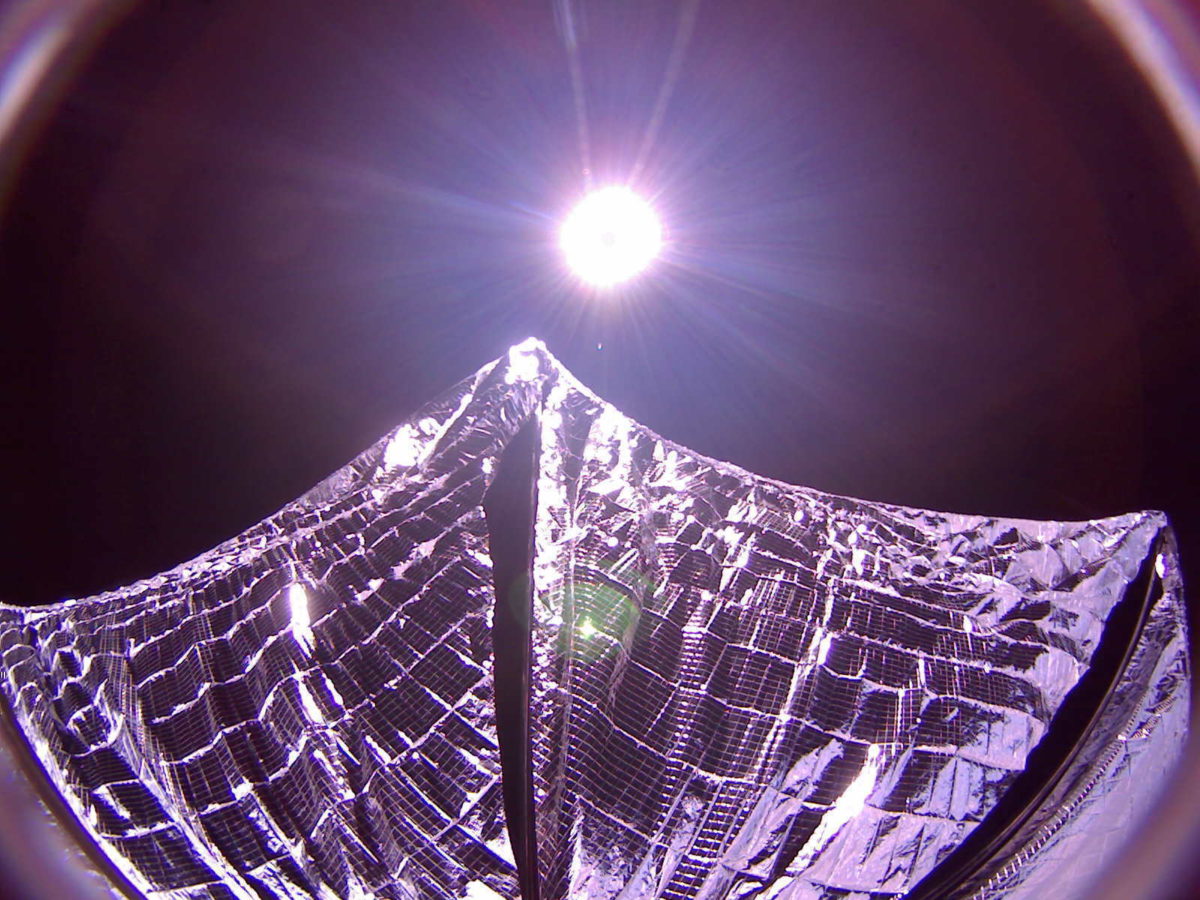Jason Davis • Jun 15, 2015
LightSail Test Mission Ends with Fiery Reentry
The LightSail test mission is officially over. Following a 25-day stay in low-Earth orbit, the spacecraft tumbled back into Earth’s atmosphere Sunday afternoon. Orbital models show reentry likely occurred around 1:23 p.m. EDT (17:23 UTC), give or take 10 minutes, near the South Atlantic Ocean.
LightSail’s last week in space was a microcosm of its six-year history, bookended by exasperation and triumph. A complete image of the spacecraft’s solar sails was downloaded on June 9, confirming the mission’s primary objective of sail deployment had been met. But before engineers could get a picture from the opposite-side cameras, LightSail’s radio began transmitting a continuous, nonsensical signal, and the spacecraft stopped responding to commands.

The last time LightSail checked in was Wednesday, June 10 at 11:29 p.m. EDT. The corresponding beacon packet, which turned out to be the mission's last, displayed a real-time clock value of 1,837,416 seconds—21 days since launch on May 20. The gyroscopes, which were able to capture snapshots of the spacecraft’s tumble rate after every reboot, showed LightSail tumbling at 6.7, 2.4, and 0.3 degrees per second about its X, Y and Z axes. The Z-axis runs lengthwise through the oblong CubeSat; if LightSail were a gigantic top with its sails parallel to the floor, it was hardly spinning at all.
The day after sail deployment on June 8, LightSail’s rotational rate was a leisurely 116 seconds, according to observers using a wide-field survey telescope in Russia. That changed as the spacecraft dipped deeper into the atmosphere. By June 11, the rate had sped up to 36 seconds. On the day before reentry, it was 21 seconds.
On Sunday, Cal Poly’s Justin Foley heard from LightSail on its final ground station pass of the day, which began at 12:52 p.m. EDT. It was overflight number 223, and it would be the last time the spacecraft would phone home—even though it wasn't much of a conversation, with LightSail continuing to speak in gibberish. The signals in Justin’s waterfall spectrum shift left to right like a wailing ambulance changing its pitch as it speeds by stopped traffic.
Last #LightSail pass over @calpoly this morning. She's still up there, and running about 45 sec ahead of TLE. pic.twitter.com/js6Hnje4Jm
— Justin Foley (@justindfoley) June 14, 2015And then there was nothing to do but wait. LightSail’s orbit only brought it within range of its U.S. ground stations early in the day. Ted Molczan of SatObs made the first end-of-mission pronouncement Sunday afternoon, calling time of death at 1:23 p.m. EDT (17:23 UTC), give or take 10 minutes in either direction. His prediction was bolstered by Justin’s observation that LightSail was running 45 seconds early. Further evidence in favor of Ted's numbers came Monday when the Joint Space Operations Center issued a new set of orbital elements. Of the reentry, Ted wrote:
"Allowing the GMAT propagation to continue to decay revealed that it would have reached the altitude at which decaying objects typically become self-luminous (96 km) on Jun 14 near 17:22 UTC, and would have passed through the typical altitude of "main-break-up" (78 km) near 17:23 UTC. Given its low mass, I doubt it could have survived much longer. If this is correct, then it survived less than half an hour after the Cal Poly pass."
Self-luminous! LightSail was no longer just a reflective object in Earth orbit; it was now glowing on its own amidst a ball of superheated plasma that formed when air molecules in the solar sail’s path couldn’t get out of the way fast enough.
So it was over. Or was it? Late Sunday night from Germany, radio observer Mike Rupprecht posted a screenshot showing what could have been those solid double lines from LightSail’s anomalous radio system, barely visible above the background noise.
New post: LightSail still a faint signal http://t.co/IW4pYDcukd 01:39 UTC still a faint signal ~ 2 minutes ahead TLE pic.twitter.com/VX8N2Q4lCK
— Mike Rupprecht (@dk3wn) June 15, 2015If you plug the spacecraft’s final orbital elements into modeling software, you get an altitude of -53.6 kilometers at 01:39 UTC. In other words, the spacecraft should no longer have been a spacecraft. But it’s fun to imagine a scenario in which LightSail’s solar sails snapped cleanly away as the CubeSat reentered, allowing the avionics and radio systems to skirt around the Earth for a few more orbits. One final act of defiance, so to speak.
Whatever actually happened, LightSail—the test unit, anyway—is no more. The vast list of lessons learned must now be applied to the second mission, a full-fledged solar sailing demonstration slated for late 2016. There will be more stories to tell as engineers prepare the spacecraft for launch. We'll also start focusing on the tale of Prox-1, LightSail’s student-built partner vehicle. And perhaps most importantly, there's the matter of LightSail's ride to orbit: SpaceX's yet-to-be-built Falcon Heavy rocket.
The quest for flight by light continues.

Support our core enterprises
Your support powers our mission to explore worlds, find life, and defend Earth. You make all the difference when you make a gift. Give today!
Donate

 Explore Worlds
Explore Worlds Find Life
Find Life Defend Earth
Defend Earth

